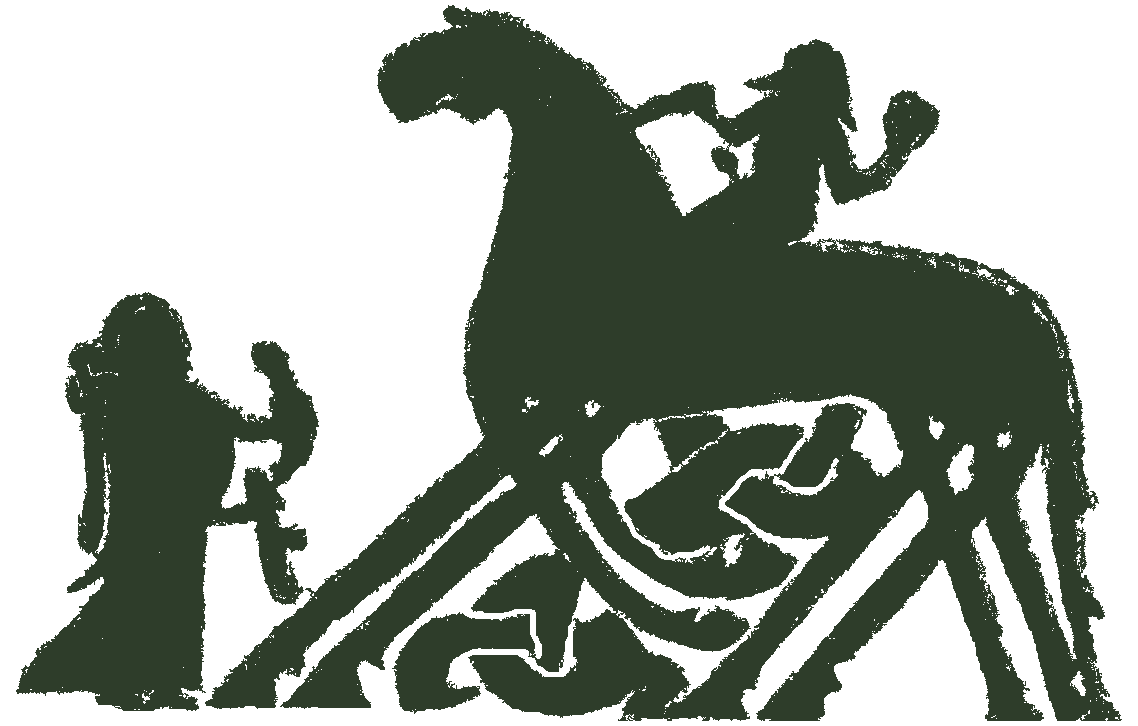1. About the project
This is not currently part of the peer-reviewed material of the project. Do not cite as a research publication.
The Sources Database represents a project to document the sources for the pre-Christian religions of Scandinavia. It is being pursued in collaboration with the broader project of Pre-Christian Religions of the North. The following is a description of the overall project by John Lindow from its inception in 2010.
Pre-Christian Religions of the North: Histories and Structures
This project is part of the international effort to replace the standard scholarly handbook of Nordic pre-Christian religion, namely the third edition (1970) of Altgermanische Religionsgeschichte by Jan de Vries (essentially a reprint of the 1956 second edition). Although many good handbooks with popular orientation exist and continue to be published, only a few sound scholarly handbooks have appeared since 1956, such as those of Gabriel Turville-Petre (Myth and Religion of the North, 1964) or Åke V. Ström (Germanische Religion, 1974), and they do not even attempt the complete coverage that de Vries provided.
The last seventy years have seen an explosion of theories applicable to the historical study of religion, none of which were known to or applied by de Vries or, of course, those upon whose work he built. De Vries’ scholarly perspective was almost exclusively philological, and indeed it may be fair to say that philology (broadly defined) has dominated much of the work done on Nordic pre-Christian religion. Recent work has recognized that the (primarily Icelandic) textual traditions must be seen as learned Christian interpretations and echoes of pre-Christian religion, but that they nevertheless contain much relevant information, and this information is increasingly being linked to the archaeological record and viewed through the lens of the discipline of the study of religion, which has of course made great methodological strides since the middle of the last century. We have therefore conceived our project as wholly interdisciplinary from the start; the editorial team consists of an archaeologist (Anders Andrén, Stlockholm), a historian of religion (Jens Peter Schjødt, Aarhus), and a text scholar (John Lindow, Berkeley). In addition, we intend to include authors with other specializations and areas. In all, we expect the project to include fifteen or so additional authors.
Those who have at this point agreed to participate include Stefan Brink (Aberdeen), Thomas DuBois (Madison), Ingunn Ásdísardóttir and Terry Gunnell (Reykjavík), Karen Bak Pedersen (Aberdeen), Rudolf Simek (Bonn), and Torun Zachrisson (Stockholm). Although the project thus represents an international collaboration, the three editors will write the bulk of the text and, most importantly, will edit all of the copy so that the work will not be a gathering of expert chapters but rather a coherent treatment that speaks with one voice.
The use of the plural Religions recognizes our view of the impossibility of the goal of de Vries and others to reconstruct a unified mythology and religion (parallel to the reconstruction of a proto-Germanic language); indeed, this reconstructed entity exists only in some non-specified hypothetical and theoretical space. The current scholarly perspective is that the texts relate to the later Iron Age, that is, c. 500-1000 CE, but there appear to be older elements as well. One of the most important distinctions, then, between our project and the works it intends to replace is our insistence on attempting to delineate and always to keep in mind where we are in time and space. This effort will involve not only the linguistic frame that has always offered a point of departure, but also the spatial frame, the social frames (encounters with neighboring cultures) and the social contexts, with treatments of such topics as Landscape and settlement, Law and assembly, Politics, Gender, Kings and kingship, Warrior bands, Ethics and Honor, as indicated in the outline below. Two obvious indicators of the progress that scholarship has made can be seen in our treatment of the mythology and of ritual (regarded by the earliest students of history of religion as the sum of the field). We embed our presentation of ritual in a theoretically up-to-date discussion of “Communication between Worlds” and our survey of the individual gods—a sine qua non for a work of this nature—in a similarly up-to-date discussion of the conceptual frameworks in which myth operated.
It is important to note that from the very first pages our work will attempt not confident reconstruction but rather nuanced presentation of what may be possible to construe through direct confrontation of the problems that present themselves. Even so, we intend our volumes to serve as the standard reference work for years to come, to be of value to specialists in Old Norse and the Viking Age, in the Study of Religion and adjacent disciplines, and to the educated reader.
